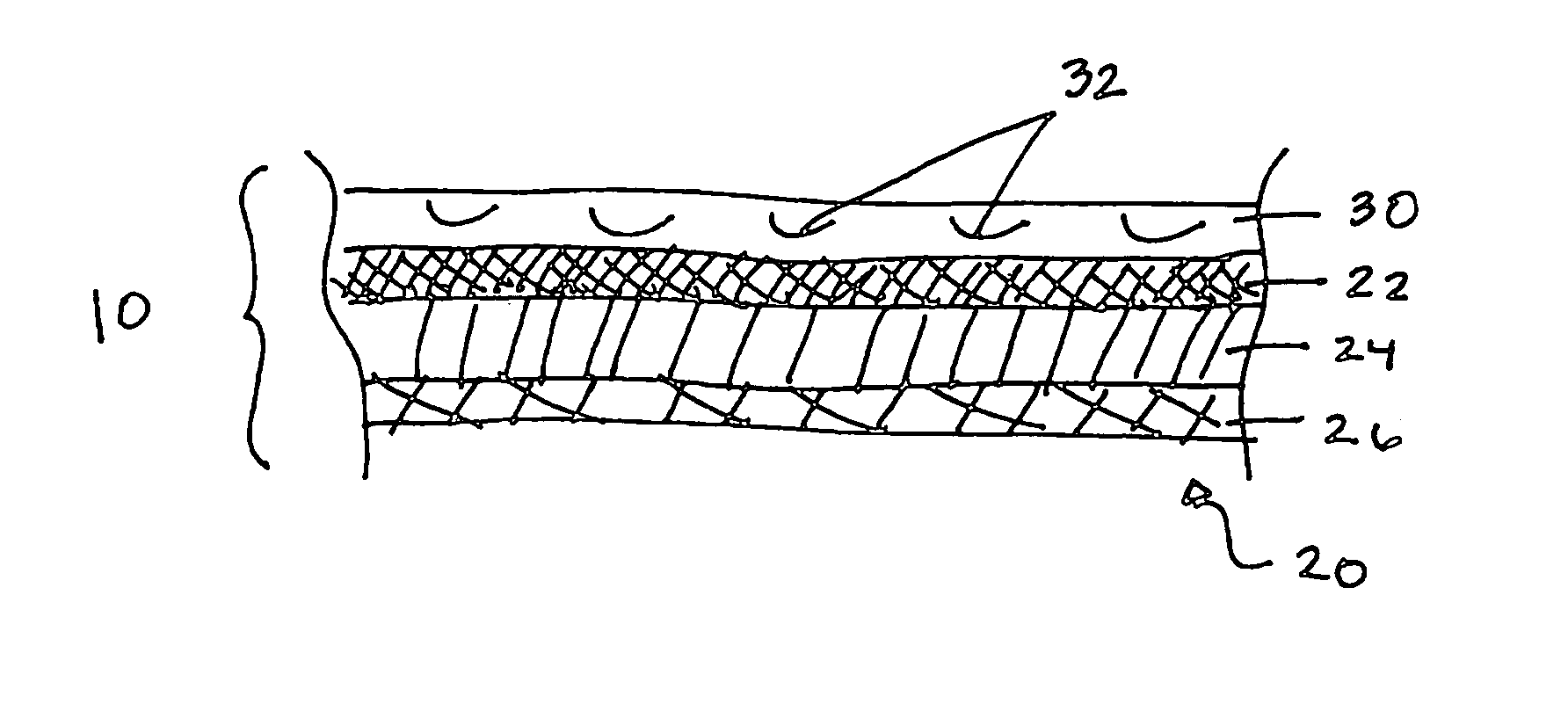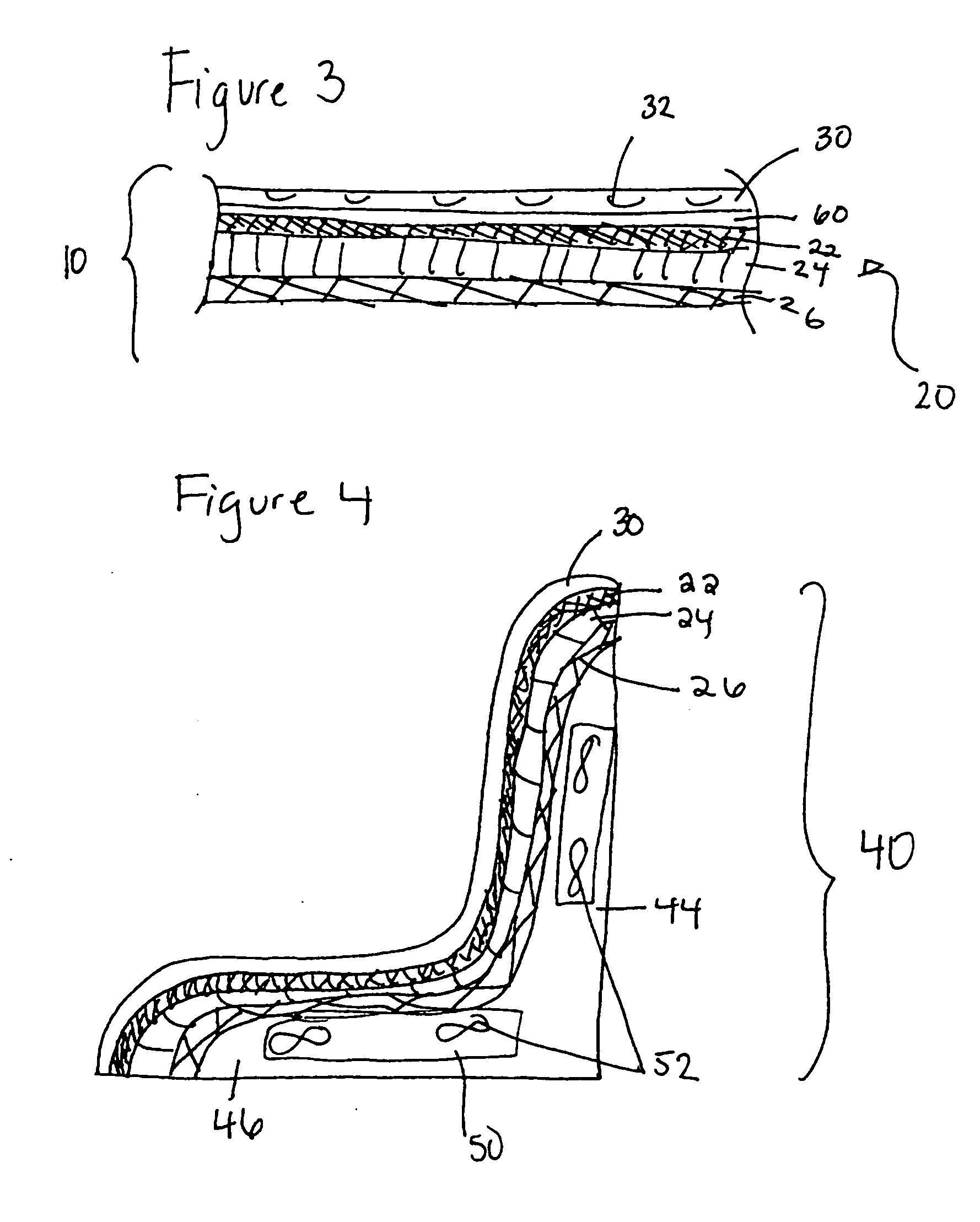Laminated spacer fabric
a spacer fabric and foam technology, applied in the field of foam spacer fabric, can solve the problems of puckering and air pockets, affecting the comfort of seating or objects utilizing the foam fabric, and forming pockets or gaps between the foam padding and outer layers,
- Summary
- Abstract
- Description
- Claims
- Application Information
AI Technical Summary
Problems solved by technology
Method used
Image
Examples
Embodiment Construction
[0021] Hereinafter, embodiments of the present invention will be described with reference to the attached drawings.
[0022] According to an embodiment of the present invention, a laminated material 10 is provided. As shown in FIG. 5, the laminated material 10, may include a cover layer 30 and a porous material layer 15. The cover layer 30 may be porous and may include a poly-vinyl chloride polymer coated material, leather, body cloth fabric, a thermoplastic olefin coated material, a polyurethane coated material, or any other suitable material. The porous material layer 15 may be a reticulated foam, a nonwoven textile, or preferably a spacer fabric.
[0023] According to an alternative embodiment of the present invention, the porous material layer 15 may comprise a spacer fabric 20. The spacer fabric 20, as shown in FIGS. 1 and 2, may include a first fabric layer 22, a second fabric layer 26 and a pile layer 24 which connects the first 22 and second 26 fabric layers. The fabric layers 2...
PUM
| Property | Measurement | Unit |
|---|---|---|
| Linear density | aaaaa | aaaaa |
| Linear density | aaaaa | aaaaa |
| Percent by mass | aaaaa | aaaaa |
Abstract
Description
Claims
Application Information
 Login to View More
Login to View More - R&D
- Intellectual Property
- Life Sciences
- Materials
- Tech Scout
- Unparalleled Data Quality
- Higher Quality Content
- 60% Fewer Hallucinations
Browse by: Latest US Patents, China's latest patents, Technical Efficacy Thesaurus, Application Domain, Technology Topic, Popular Technical Reports.
© 2025 PatSnap. All rights reserved.Legal|Privacy policy|Modern Slavery Act Transparency Statement|Sitemap|About US| Contact US: help@patsnap.com



